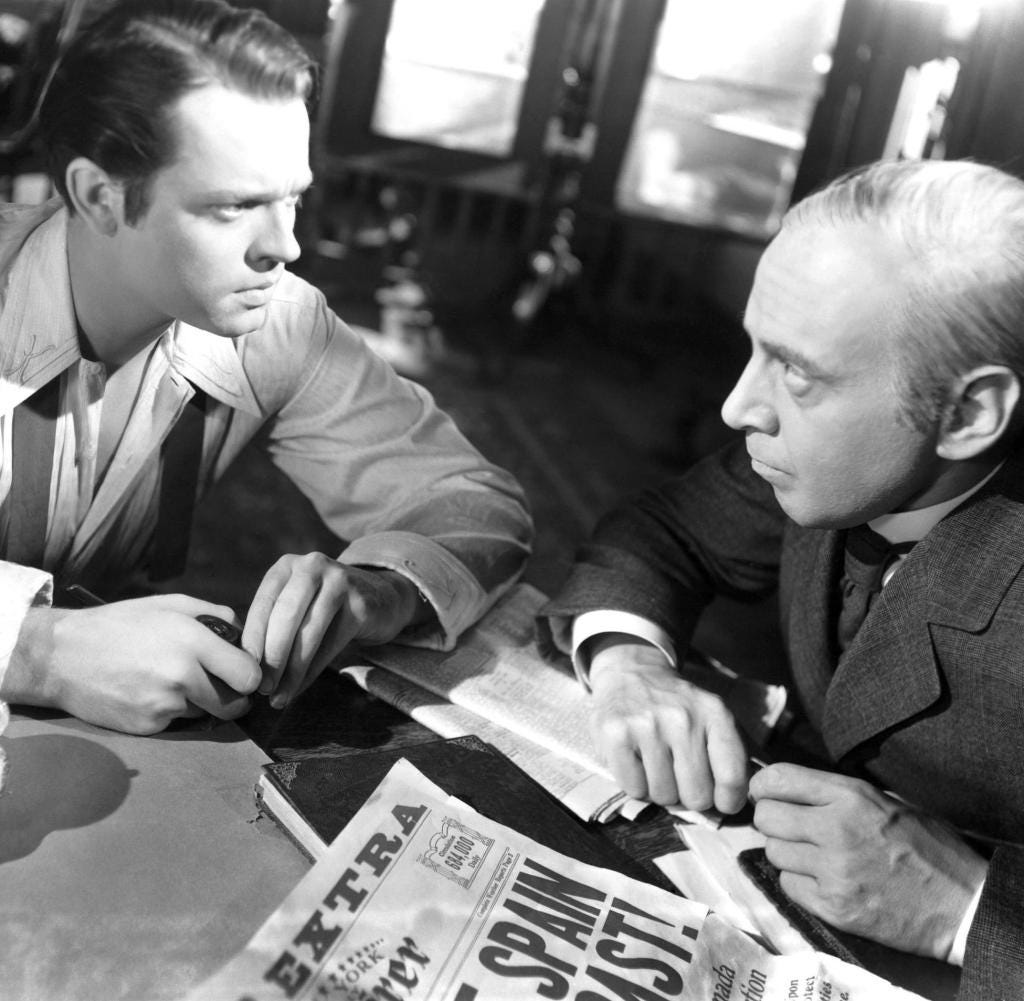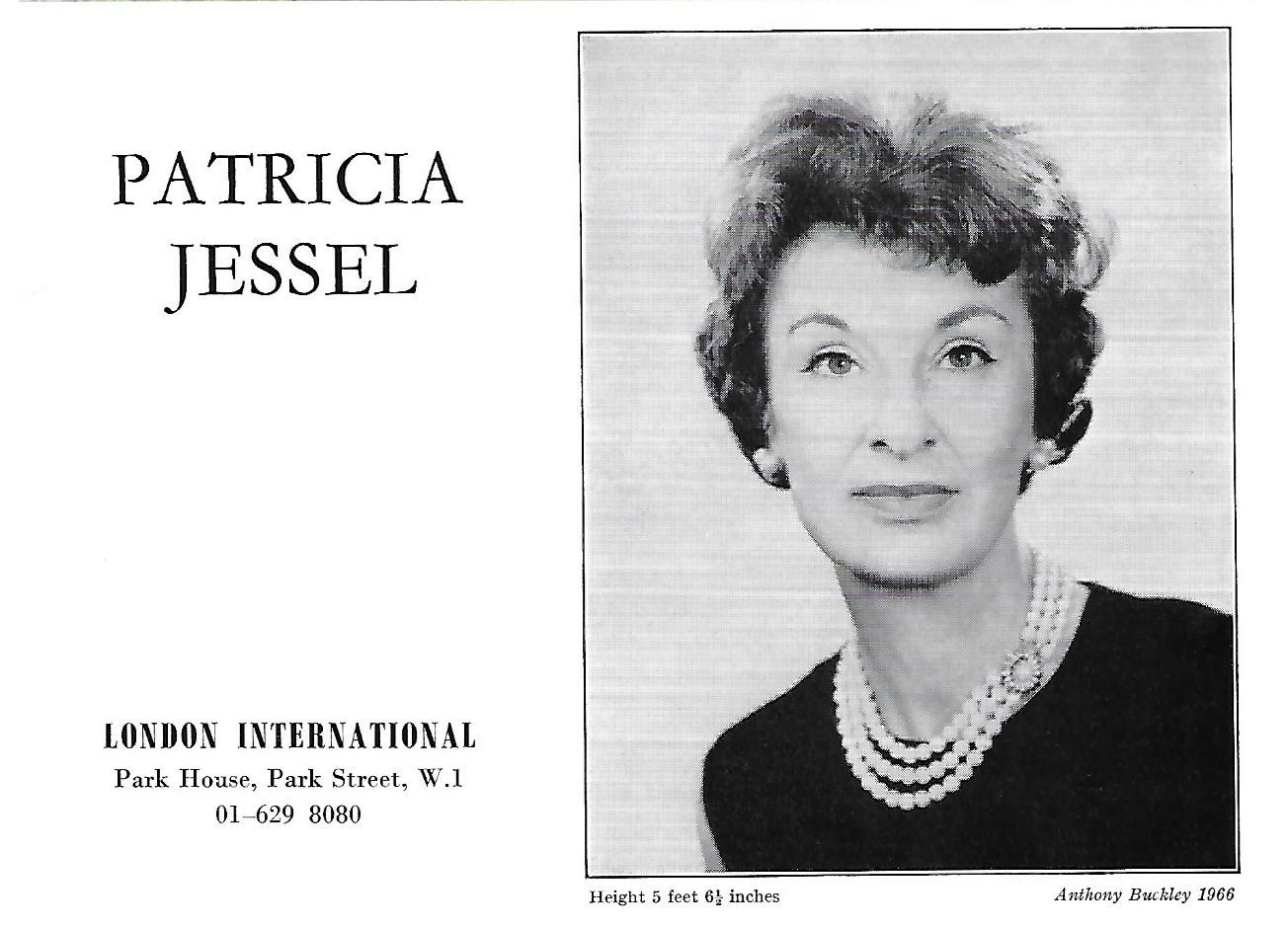Observations
A mixed bag of ‘Checkmate’ noticings this time. As I observed last time, this is a much more direct and cut-and-dried episode than usual - in fact, it might be the most transparent, unambivalent card in the pack. But vanilla is an under-appreciated flavour. And there are quite a few little oddities and points of interest to be found here.
NB - I am going to refer to The Man With The Stick (Vic) as Colouris, the actor’s name, for ease of comprehension.
The Queen’s Pawn - the shooting script
In the script the Queen is introduced as an ‘attractive young woman’ and referred to in several stage directions as a ‘girl’. As I said last time, the casting of Rosalie Crutchley in this part makes it so much more interesting than it is on paper. Her characterful face and scrawniness are miles from the ITC dolly bird - imagine the difference, how much more conventional it would be, if say Angela Douglas or Nicola Pagett had played this part.
Crutchley plays the initial scene on the chess board with a daffy jolly-hockey touch - ‘oh, everyone tries to escape until their spirit’s broken’ - and her pre-love trap offer to help P escape comes across as a kind of agreeable diversion for her. In the script, it reads that she’s attracted by P’s masculine charms and follows him to offer her services because it might bring him closer to her. On screen, it reads that she is amused by his unbroken spirit, even if she views escaping as an utterly futile idea.
Casting this part against the script makes the whole Queen story come alive in a spookier way. This is in no way love’s young dream. Her obsession with P after the hypnosis is similarly not sexual, but almost motherly - making him a nice hot drink and metaphorically tucking him in at bedtime. These scenes as written take on a different, much more vivid, life with this actress.
Other interesting things from the script - George Colouris’s stick is fitted with a bugging device by the Village, which suggests that despite his infirmity he is still considered a risk to some degree. He can walk freely when Rover passes but is not attacked by Rover, which suggests to me that the stick contains a device to protect him from its attentions. (As we will later discover, Rover can be quite undiscerning, so such a gadget is probably necessary.) The unusual status of Colouris is left mostly unexplored here, though it’s what draws P into the story at the very start.
Colouris seems to be a licensed doubter, a physically harmless old man permitted certain small privileges. He is allowed to be vaguely seditious in a non-specific, defeated way. (I’m thinking of Tony Benn’s late-life theatre tours here.) The Village must calculate that he is providing some value to the community - perhaps as another little valve for the release of pressure, like the Therapy Zone cave. The iron rule is that you must BE STILL when Rover passes by. Except for that bloke. Why? Perhaps, partly, to make you ask why.
We must, as always, remember that the Village is designed, within the fiction, to be a confusing and illogical place. Through this lens, The Prisoner is not a confusing story - it is a story about someone being deliberately confused.
That this oddity is presented as a casual detail of Village life rather than the plot of an episode - which it easily could be - is a testament to the series’ level of textual richness, even at its most straightforward.
The Psychiatrist is male in the script, and the casting of the wonderfully Memsahibby Patricia Jessel in the part is another swerve that lifts the thing. It gives the love-bug plot an extra kick that it’s devised by another woman. And the reversal of standard sex stereotyped roles between her and Number 2 - who is cool but chatty and informal while she is cool, remote and clinical - adds to the unusualness. Jessel died just a few months after transmission. She was a classy turn, and this was her only ITC appearance. In film she was often typecast as a villain. Her beautiful diction - ‘he must have superhuman willpower’ - is a delight to the ear, but then she was the daughter of a British Army officer in Hong Kong.
In the shooting script, all three end-of-acts are more dramatic than in the final edit. The length of an individual act is not quite so standardised in 60s tv the way it became shortly afterwards, and even more so today. But it must’ve been a consideration, as the scripted end-of-acts are much better placed. The end of Act 3 here - P and the Queen in two-shot in the buggy, P observing ‘Really’ mildly sceptically - is particularly ‘so what’ compared to the script, where it comes with the Rook’s line ‘This time tomorrow we’ll be free!’ Act IV is then a mammoth 17 minutes duration. The end of Act I loses an exchange between P and the Queen that would’ve firmed up the narrative, P telling her (of Colouris): ‘One man’s been pointing the way. Too bad you can’t see it!’
(Interestingly, in his short introduction to ‘Checkmate’ in The Original Scripts Vol 2, Robert Fairclough says that an earlier draft saw Number 2, the Rook and the Queen all on board the MS Polotska at the end to greet P. This was probably cut and moved to a TV interaction as they couldn’t possibly have got there ahead of him. Fair enough. But it still might’ve been nice to see the Queen again at the end.)
But the most interesting thing revealed from the shooting script is that -
Keep reading with a 7-day free trial
Subscribe to The Culture Bunker to keep reading this post and get 7 days of free access to the full post archives.







